With the advent of the thermal imaging camera (TIC), technology has given us the ability to see again. That alone is an amazing feat and provides an increased level of safety. But as with any technology, it also comes with challenges that some operators might not know about. We all know and understand how important a TIC is during a structure fire, but what about using a TIC to during an aircraft emergency?
The ARFF Mission
The core foundation/mission of the aircraft rescue and firefighting (ARFF) team is to protect the flying public. Some ARFF departments may also fill a dual role with structural fire protection as well (if airport management requires them to) that may include providing fire protection services to the patrons and tenants of the terminal.
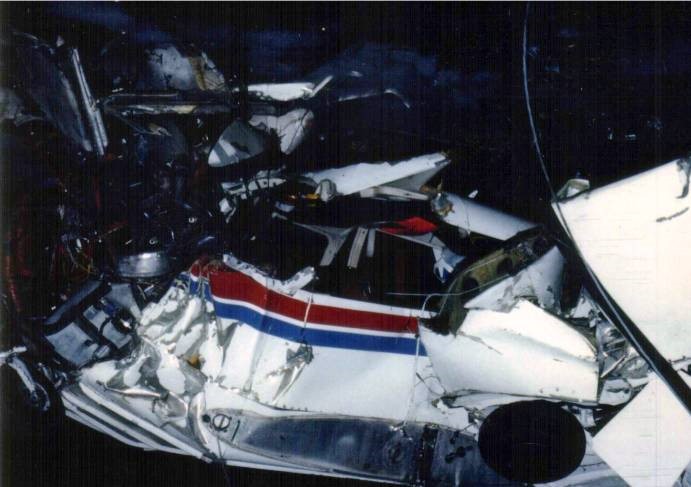
There are many restaurants and stores, fixed based operators, and/or any structures located on airport owned property. On a daily basis, ARFF members around the world perform apparatus and equipment checks to assure operational readiness. Chiefs, take note: Depending on your specific mission this is what really drives your risk management model. For example, fire departments that provide only flight line fire protection should primarily focus their training on TIC use for aircraft fires and those departments that provide both flight line and structural protection must provide training for both target hazards.
The Advantages of the TIC
The advantages of using a TIC are obvious. They allow the user to locate the fire and/or victim(s) faster than without one. In the ARFF industry, there are some challenges not commonly found when fighting a structure fire. These challenges include the fuels that are burning; the aircraft construction (materials); and with that, some incredibly high temperatures found on some of the material burning on an aircraft. With a good training program, a TIC can be a very effective tool when used in the ARFF Industry.
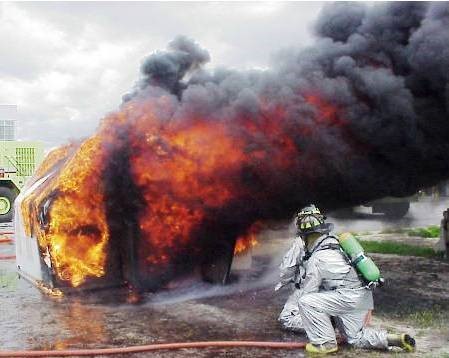
TIC Use for ARFF
Firefighting crews can use the TIC to assist in the size-up of an aircraft incident. The TIC can afford the ARFF driver/operator with information on the location of the fire from the exterior of the aircraft. This, in conjunction with a penetrating piercing nozzle, can allow rapid and precise fire attack from an ARFF vehicle. The TIC can also assist the interior search and rescue firefighters with locating victims and the fire and assist with locating hidden fires during extinguishment operations and also during overhaul. Aircraft have many voids and hidden spaces where heat, smoke, and fire can travel. Additionally, the TIC can be used for locating overheated electrical components, monitoring hot brake incidents and locating invisible high-pressure hydraulic cylinder leaks and potentially dangerous liquid oxygen (LOX) leaks on military aircraft systems.
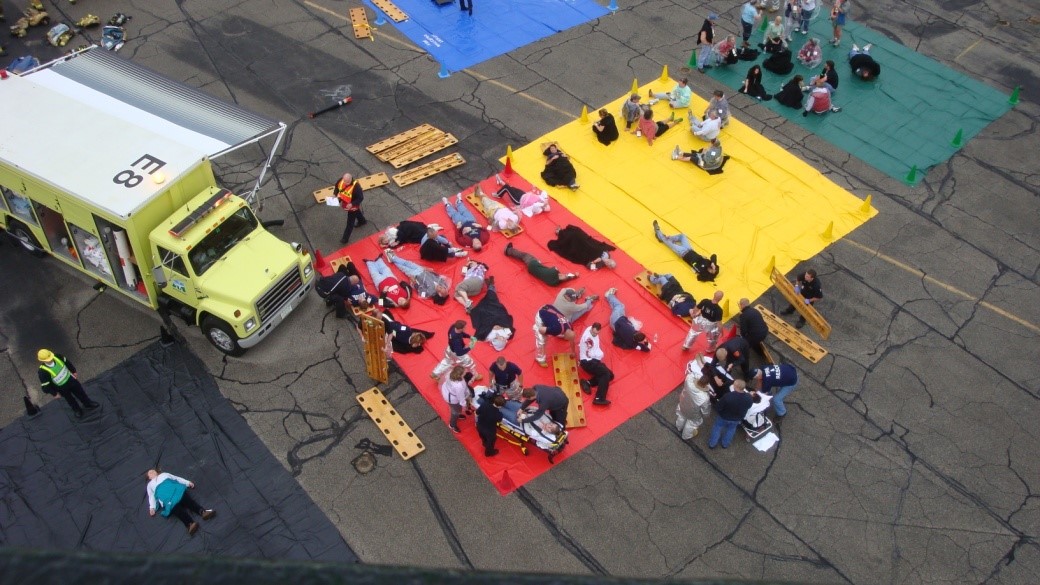
TIC Challenges
There are, however, a few challenges that firefighters need to be familiar with when using a TIC during an aircraft incident. Aircraft construction is made up of a variety of aluminum, duralumin, composites, magnesium, titanium, and steel. Aircraft skin can have a blend of aluminum alloys to form lightweight panels that have rigidity. The panels are known to have relatively low emissivity. When interpreting an image with a TIC during low emissivity, it doesn’t read true temperatures. The LCD can show these materials as black or even gray. Don’t be fooled by the palette displayed (heat signature) because these have been known to be hotter than traditional black or gray materials in the structural firefighting world.
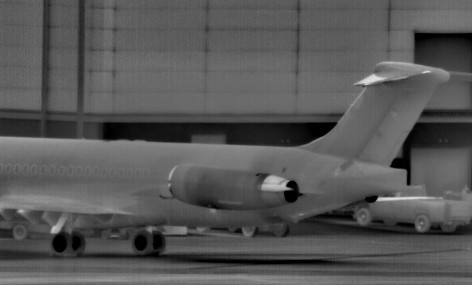
TICs can also display images on shiny objects like a mirror or glass, and polished aluminum could present a challenge. In these TIC presentations with the reflection of infrared (IR), firefighters need to understand that the images viewed may not be the true layout because reflections of fire, access, egress of doors and windows, or even victims seen by the camera might not be accurate.
TIC Training
The development of a good TIC training program has to take into consideration the intended working environment. As a professional educator, one of my goals is to always train firefighters for the environment they are expected to work in. Training inside the fire station with the lights off to replicate how the camera works and will display is highly inefficient. The sensitivity from the different building materials and the climate-controlled environment are just a few issues that will train firefighters for what they likely won’t see.
Training firefighters for TIC use and operations at some of the Federal Aviation Administration (FAA) approved training facilities for interior fire operations can also create some unique challenges. The density of the materials used to build and sustain repetitive burn evolutions will also change the sensitivity of the display. Many of these props are made with very thick and heavy steel plates and tubes unlike the lightweight materials used in the aviation industry.
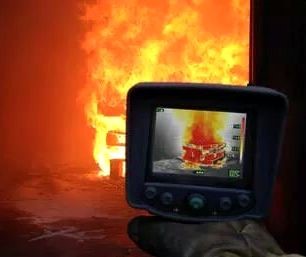
Therefore we must gain access to true aviation materials to introduce and train firefighters on the cause and effect of TIC sensitivity. The fixed and mobile training facilities do provide realistic training in how small and compact the working environment is. Access and egress doors, windows and hatches are smaller than traditional residential construction found in our homes. The aisle or walkway on aircraft are also very narrow and sometimes may require firefighters to modify the way we move our body with full PPE and SCBA during operations in general aviation, corporate, or narrow-body aircraft. The TIC provides us with the ability to see through dense, thick black smoke. Practical applications in aircraft not only allow the user to look down these narrow aisles but also allow the ability look underneath the seats to locate potentially unconscious or incapacitated victims quickly. From a given position, you can see a good 5-10 rows depending on the amount of carry-on baggage placed on the floor.
The best training application is to gain access to both the commercially built live fire trainers and real-world aircraft. This will allow the user to see the differences in heat, smoke, and gases along with the lightweight density and sensitivity of a real aircraft.
TIC Talk
If you get one thing from this article, please note that the training from the operational manual for putting the camera in service, maintenance, and cleaning are all important, but more importantly it is the application of that camera in real-world working environment will provide the end user with the ability to find fires quicker, locate and assist victims faster, and maintain a high level of situational awareness that will keep firefighters safer during operational use.
WILLIAM GREENWOOD is a 25-year veteran of the fire service. He is currently the Assistant Fire Chief of Training at the Manchester-Boston Regional Airport. Billy is a Senior Staff Instructor for the New Hampshire Fire Academy and owns FETC Services, which provides advanced firefighter and leadership training services. He is also a national speaker for FDIC-International and has been published in Fire Engineering and FireRescue magazines.

